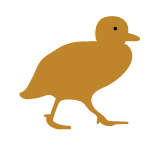This is an annual course split into two parts which enables students to analyze and create cyber-physical systems both individually and in diverse teams under academic supervision.
This course will create disciplinary experts who have a hands-on understanding of new and emerging technological constellations and their separate components. Participants will complete a range of lab-based projects to develop a technical understanding of systems as designed objects which embody values. They will also gain technical skills in designing, building and understanding cybernetic systems, and understanding Cyber-Physical Systems (CPS) from the ‘inside’, with an emphasis on making and building. This complements the approach in CYBN6001 and CYBN6002, which challenge participants to consider cybernetic systems from the ‘outside’ via interrogating case studies.
Participants will not emerge from the course as qualified programmers or computer scientists. Instead, through learning-by-doing, participants will gain sufficient knowledge and practice to drive meaningful and accurate conversations about cybernetic systems and shape design decisions as a part of a multidisciplinary team developing new and emerging technologies.
Learning Outcomes
Upon successful completion, students will have the knowledge and skills to:
- Interrogate the separate components of cyber-physical systems using appropriate terminology
- Evaluate complex ideas and concepts through a holistic analysis of technological constellations
- Critically analyze principles and guidelines for designing and building cyber-physical systems, including the social, regulatory, and environmental factors
- Synthesize information and apply relevant concepts, trends, techniques, principles and values when creating cyber-physical systems
- Design, plan, execute, and document cyber-physical system prototypes informed by research
- Work effectively with cohort colleagues in collaborative settings
- Reflect and effectively communicate knowledge and capabilities to a variety of audiences
Work Integrated Learning
Simulation/Virtual
Student experiences all the attributes of a placement or workplace task in a provider setting.
Integrated theory with the practice of work. Integrates cybernetic methodologies with the students’ real life and career experiences in structured case study analysis and role play.
Planned, authentic activities. Integrates technological system integration skills with the students’ real life career goals and experiences.
Purposeful links to curriculum and specifically designed assessment. Comprises assessment specifically designed to purposefully link the course curriculum to the workplace environment:
Indicative Assessment
- Skills Work (40) [LO 1,2,3,4,5,6,7]
- Build Journey (15) [LO 1,2,3,4,5,6,7]
- CPS Maker project (45) [LO 1,2,5,6,7]
The ANU uses Turnitin to enhance student citation and referencing techniques, and to assess assignment submissions as a component of the University's approach to managing Academic Integrity. While the use of Turnitin is not mandatory, the ANU highly recommends Turnitin is used by both teaching staff and students. For additional information regarding Turnitin please visit the ANU Online website.
Workload
The quantum of work through the semester will be approximately 260 hours per 12 units of course. This will predominantly include a laboratory-based project work, as well as group and independent work.
Inherent Requirements
The assumed knowledge and requirements to take this course were documented in the application pack available at https://cybernetics.anu.edu.au/education/masters/
Requisite and Incompatibility
You will need to contact the School of Cybernetics to request a permission code to enrol in this course.
Prescribed Texts
None
Preliminary Reading
Cunningham, Kate. 2013. Sams Teach Yourself Python in 24 Hours.
Resource lists for this course range from technical reference manuals to podcasts or media stories of relevance to the course content in a given week. Participants will also be encouraged to continue to draw on materials and tools from CYBN6001 and CYBN6002.
Assumed Knowledge
The assumed knowledge and requirements to take this course will be documented in the application pack available at https://cybernetics.anu.edu.au/education/masters/
Fees
Tuition fees are for the academic year indicated at the top of the page.
Commonwealth Support (CSP) Students
If you have been offered a Commonwealth supported place, your fees are set by the Australian Government for each course. At ANU 1 EFTSL is 48 units (normally 8 x 6-unit courses). More information about your student contribution amount for each course at Fees.
- Student Contribution Band:
- 2
- Unit value:
- 12 units
If you are a domestic graduate coursework student with a Domestic Tuition Fee (DTF) place or international student you will be required to pay course tuition fees (see below). Course tuition fees are indexed annually. Further information for domestic and international students about tuition and other fees can be found at Fees.
Where there is a unit range displayed for this course, not all unit options below may be available.
| Units | EFTSL |
|---|---|
| 12.00 | 0.25000 |
Course fees
- Domestic fee paying students
| Year | Fee |
|---|---|
| 2025 | $10560 |
- International fee paying students
| Year | Fee |
|---|---|
| 2025 | $13440 |
Offerings, Dates and Class Summary Links
ANU utilises MyTimetable to enable students to view the timetable for their enrolled courses, browse, then self-allocate to small teaching activities / tutorials so they can better plan their time. Find out more on the Timetable webpage.
Class summaries, if available, can be accessed by clicking on the View link for the relevant class number.
First Semester
| Class number | Class start date | Last day to enrol | Census date | Class end date | Mode Of Delivery | Class Summary |
|---|---|---|---|---|---|---|
| 3905 | 17 Feb 2025 | 24 Feb 2025 | 31 Mar 2025 | 23 May 2025 | In Person | View |
Second Semester
| Class number | Class start date | Last day to enrol | Census date | Class end date | Mode Of Delivery | Class Summary |
|---|---|---|---|---|---|---|
| 8916 | 21 Jul 2025 | 28 Jul 2025 | 31 Aug 2025 | 24 Oct 2025 | In Person | View |


